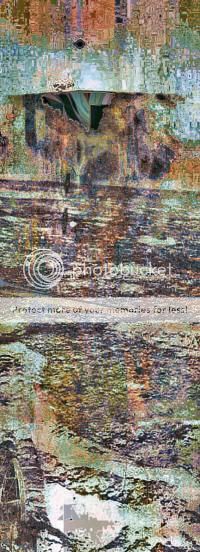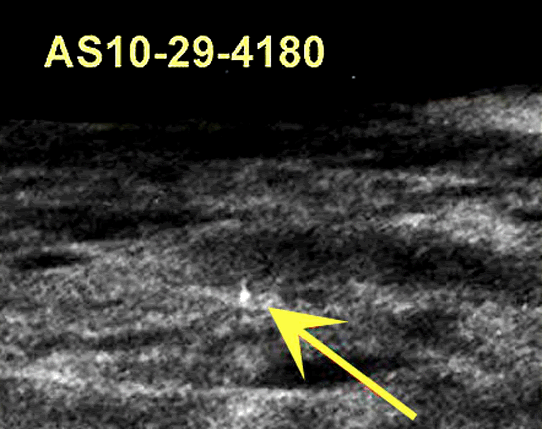It looks like you're using an Ad Blocker.
Please white-list or disable AboveTopSecret.com in your ad-blocking tool.
Thank you.
Some features of ATS will be disabled while you continue to use an ad-blocker.
share:
Originally posted by NGC2736
reply to post by spikedmilk
OK, I caught you! That last image with all the colors is mislabeled.
That's "The Crowning of the Magi", a lost Picasso worth millions.
doh! sonsofguns! now i gotta take it off the fire place mantle!
I shake my fist at you!
If there is no atmosphere on the Moon, how can something "blow" in the wind.
Originally posted by spikedmilk
and one of my new favorites...from Luna 7 (russian rover)...yeah its hard to look at but once you get a feel for it....
Spikedmilk, could you send me a link to more information about this Luna 7 image?
And what do you find so interesting in it?
I agree it's interesting but is this the original image? Is that available?
"that top NASA officials privately claim this footage is indeed legitimate. However, certain aspects related to this footage are highly classified,
and the matter is under investigation."
To Jedimiller's debunking of the film- Why would they classify something wrong with the film; like a burn on it, in it; whatever.
"Highly classify" actually.
Good bit of footage, I've never seen it before.
Hope someone can provide more information on what it may be.
To Jedimiller's debunking of the film- Why would they classify something wrong with the film; like a burn on it, in it; whatever.
"Highly classify" actually.
Good bit of footage, I've never seen it before.
Hope someone can provide more information on what it may be.
reply to post by jedimiller
I would agree with you but look at the gif. The thing moves as the camera moves, so it's not a defect in the lens or a burn in the film. That and the fact that it retains the same basic shape and shadow through all shown frames.
It is not a film or lens defect.
To OP: Could you post the source of these images? Not doubting you, just would like to see the rest of the frames that contain whatever that is.
[edit on 26-11-2007 by avingard]
I would agree with you but look at the gif. The thing moves as the camera moves, so it's not a defect in the lens or a burn in the film. That and the fact that it retains the same basic shape and shadow through all shown frames.
It is not a film or lens defect.
To OP: Could you post the source of these images? Not doubting you, just would like to see the rest of the frames that contain whatever that is.
[edit on 26-11-2007 by avingard]
i can't see the object moving over the surface. it just goes with the camera.
reply to post by mikesingh
i'm going blind----but your smoke stack pictures look nothing like what could be termed a "natural" occurence in nature-------------to my eyes----------or common sense!
i'm going blind----but your smoke stack pictures look nothing like what could be termed a "natural" occurence in nature-------------to my eyes----------or common sense!
that doesnt debunk it at all.
the horizon of the moon can clearly be seen moving down,it should be moving up if it were being zoomed!,try it yourself
.secondly the apparent original that is produced in the bad astronomy "debunk",
www.badastronomy.com...
look at the left of the horizon,it is not the same horizon as when the object was in the picture!!
[edit on 26-11-2007 by welivefortheson]
[edit on 26-11-2007 by welivefortheson]
the horizon of the moon can clearly be seen moving down,it should be moving up if it were being zoomed!,try it yourself
.secondly the apparent original that is produced in the bad astronomy "debunk",
www.badastronomy.com...
look at the left of the horizon,it is not the same horizon as when the object was in the picture!!
[edit on 26-11-2007 by welivefortheson]
[edit on 26-11-2007 by welivefortheson]
Originally posted by PrplHrt
Oh poo. Everyone seems determined to kill the dream.
In order for your dreams to come true, you have to wake up.
Originally posted by jedimiller
I've examined the footage. having taking numerous photography courses I can safely come to the conclusion that it's a dirty lens. perhaps a hair or fabric got into the developing and made it out to look that way. could also be a burn in the film, but it's a micro defect. Cameras and film get beaten up in space and function funny in space. hope this helps.
Hmmm....... "Cameras and film get beaten up in space and function funny in space. hope this helps." But then the NASA KodaK color pics are so breath-taking- perfect- so what gives here? jedi
Originally posted by jedimiller
I've examined the footage. having taking numerous photography courses I can safely come to the conclusion that it's a dirty lens. perhaps a hair or fabric got into the developing and made it out to look that way. could also be a burn in the film, but it's a micro defect. Cameras and film get beaten up in space and function funny in space. hope this helps.
what are you talking about? Why would a hair or fabric get on a multi-million dollar camera lens...This is sophisticated material here- not 5th grade science fair kinda stuff. I doubt your correct-but everyone is entitled to their opinion. I'm just saying that nasa's gotta be on top of their game- i doubt its a defect. Footage looks real to me.
Originally posted by x-phile
If there is no atmosphere on the Moon, how can something "blow" in the wind.
Well, x-phile, that's a question you gotta ask John Lear!!
Cheers!
The smoke portion is something to do with a dirty lens or similar. It does not move but appears to as the camera moves. The stack is an object on the
Moon that moves with the surface in the gif.
The stack part I think is a combo object and shadow making it look longer than it is as they are combined dark objects on a poor quality scan or original. Use the moon to put the location of the Sun in perspective.
Could be giant cannon? Could be a piece of ejecta? Interesting.
Sorry if I repeated someone else. I'm fudging on work to post and can't read whole threads tonight. I have more than 200 Ad's to finish by Thursday. Thanks for posting the pic
The stack part I think is a combo object and shadow making it look longer than it is as they are combined dark objects on a poor quality scan or original. Use the moon to put the location of the Sun in perspective.
Could be giant cannon? Could be a piece of ejecta? Interesting.
Sorry if I repeated someone else. I'm fudging on work to post and can't read whole threads tonight. I have more than 200 Ad's to finish by Thursday. Thanks for posting the pic
More obelisks on the Moon? Smokestacks? Note the length and geometric shape of the shadows.

The above photo was shot by Orbiter H-2 from twenty-three miles above
the lunar surface, and shows shadows cast by eight spires.
According to NASA, the area photographed is about 740 by
540 feet at lunar coordinates 15 degrees 30' E. 40 degrees 30' N.
The sun was 11 degrees above lunar horizon.
Courtesy:Argosy Magazine.
Clarified...

Cheers!
www.astrosurf.com...
techmonkeys.org...
[edit on 26-11-2007 by mikesingh]

The above photo was shot by Orbiter H-2 from twenty-three miles above
the lunar surface, and shows shadows cast by eight spires.
According to NASA, the area photographed is about 740 by
540 feet at lunar coordinates 15 degrees 30' E. 40 degrees 30' N.
The sun was 11 degrees above lunar horizon.
Courtesy:Argosy Magazine.
Clarified...

Cheers!
www.astrosurf.com...
techmonkeys.org...
[edit on 26-11-2007 by mikesingh]
Holy Crap .. thats where my rocket went.. I knew it landed somewhere
reply to post by spikedmilk
Spikedmilk, where did you take this image?
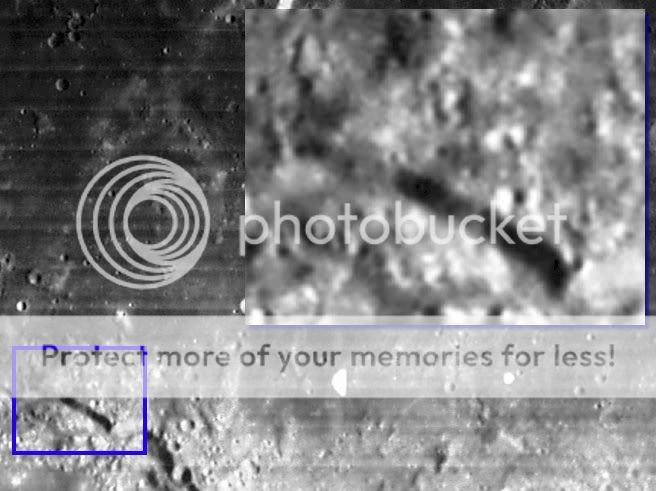
Looks familiar, to me
What about to post the credits to the original poster, my friend?
About this one...
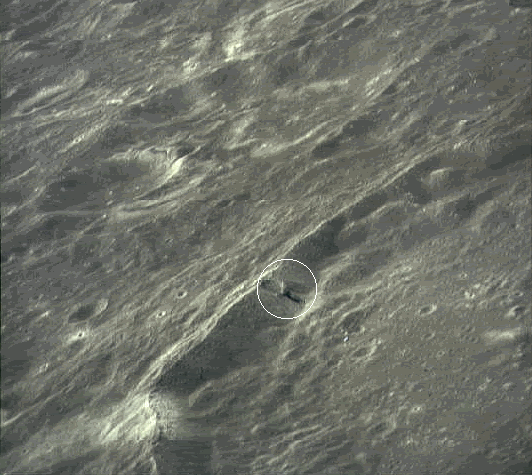
this is the link to the HI-RES version from NASA
history.nasa.gov...
[edit on 27/11/2007 by internos]
Spikedmilk, where did you take this image?

Looks familiar, to me
What about to post the credits to the original poster, my friend?
About this one...

this is the link to the HI-RES version from NASA
history.nasa.gov...
[edit on 27/11/2007 by internos]
I had posted this earlier on the john Lear forum recently. Here’s a pic of the famous Copernicus crater on the Moon. On the far side there seems to
be a massive tower! Check out the enlargement and you’d be able to clearly see it.
Resembles the one in the pic posted by me, a couple of posts above!
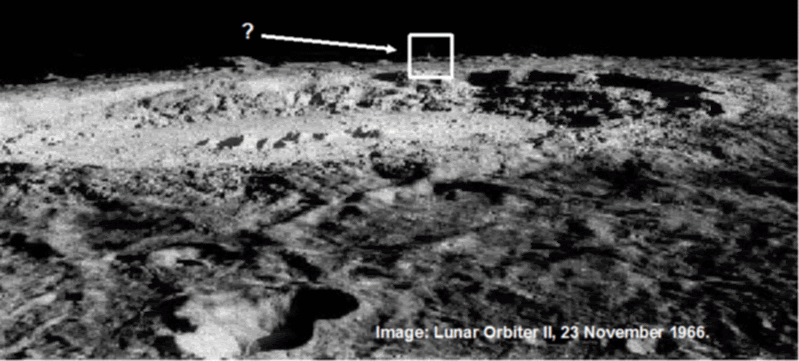
Courtesy: JPL/NASA
photojournal.jpl.nasa.gov...
Here’s the image enlarged…
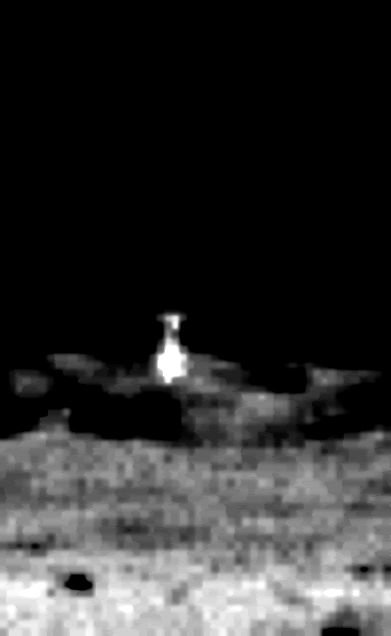
It's not a darn kangaroo for sure!!
Is it a geological formation or an artificial tower? Or the ubiquitous 'smokestack'??
Cheers!
[edit on 27-11-2007 by mikesingh]
Resembles the one in the pic posted by me, a couple of posts above!

Courtesy: JPL/NASA
photojournal.jpl.nasa.gov...
Here’s the image enlarged…

It's not a darn kangaroo for sure!!
Is it a geological formation or an artificial tower? Or the ubiquitous 'smokestack'??
Cheers!
[edit on 27-11-2007 by mikesingh]
Originally posted by patriot jim
But then the NASA KodaK color pics are so breath-taking- perfect- so what gives here? jedi
Kodak makes good color prints. Problem, NASA wasn't using color prints back then. and they didn't have very good equipment back then. We are talking about the 60's. it all goes down to how careful you are while developing the film in the dark room.
Originally posted by jedimiller
Kodak makes good color prints. Problem, NASA wasn't using color prints back then. and they didn't have very good equipment back then. We are talking about the 60's. it all goes down to how careful you are while developing the film in the dark room.
Agreed. But then there's always the other part of a story that's seldom discussed.
We know that Ken Johnston, who worked at the Lunar Receiving Laboratory in Houston during Apollo, witnessed the photo retouching and airbrushing of first generation lunar photography in order to cover up anomalous data. Fortunately, they didn’t cover it all. From what we’ve now discovered on the far side photography, its stunning to speculate what else might be found there considering that by 1972, only 20% of the entire Moon had supposedly been photographed.
www.lunaranomalies.com...
I cannot comment on this, but that's what Ken Johnston reveals. There's a thread by Zorgon on ATS on Ken's disclosures. So there's more than meets the eye, what?
Cheers!
new topics
-
Ukraine halts transit of Russian gas to Europe after a prewar deal expired
Political Conspiracies: 33 minutes ago -
Welp...Happy New Year!!
General Chit Chat: 2 hours ago -
Vehicle Strikes people in New Orleans
Mainstream News: 4 hours ago -
The Hand that Rocks the Cradle - Labour Plans “diversities of our society” Curriculum Change
Regional Politics: 4 hours ago
top topics
-
Vehicle Strikes people in New Orleans
Mainstream News: 4 hours ago, 11 flags -
SCOTUS Chief Justice JOHN ROBERTS Ends 2024 Describing His Fears for Safety of U.S. Judges.
Above Politics: 12 hours ago, 4 flags -
The Hand that Rocks the Cradle - Labour Plans “diversities of our society” Curriculum Change
Regional Politics: 4 hours ago, 4 flags -
Welp...Happy New Year!!
General Chit Chat: 2 hours ago, 2 flags -
Ukraine halts transit of Russian gas to Europe after a prewar deal expired
Political Conspiracies: 33 minutes ago, 2 flags
active topics
-
Ukraine halts transit of Russian gas to Europe after a prewar deal expired
Political Conspiracies • 10 • : SteamyAmerican -
Vehicle Strikes people in New Orleans
Mainstream News • 25 • : xuenchen -
The C.D.C. Says There Was NO INFLUENZA Worth Reporting for the 2020-2021 Flu Season.
Diseases and Pandemics • 78 • : SteamyAmerican -
‘Something horrible’: Somerset pit reveals bronze age cannibalism
Ancient & Lost Civilizations • 41 • : Xtrozero -
The Hand that Rocks the Cradle - Labour Plans “diversities of our society” Curriculum Change
Regional Politics • 11 • : angelchemuel -
How we've changed in 100 years
Ancient & Lost Civilizations • 15 • : TheMisguidedAngel -
Simulation theory and have we reset before like a game?
Conspiracies in Religions • 39 • : Xtrozero -
Welp...Happy New Year!!
General Chit Chat • 6 • : Flyingclaydisk -
SCOTUS Chief Justice JOHN ROBERTS Ends 2024 Describing His Fears for Safety of U.S. Judges.
Above Politics • 9 • : VictorVonDoom -
New UK Petition - Close the borders! Suspend ALL immigration for 5 years!
Regional Politics • 18 • : Freeborn

